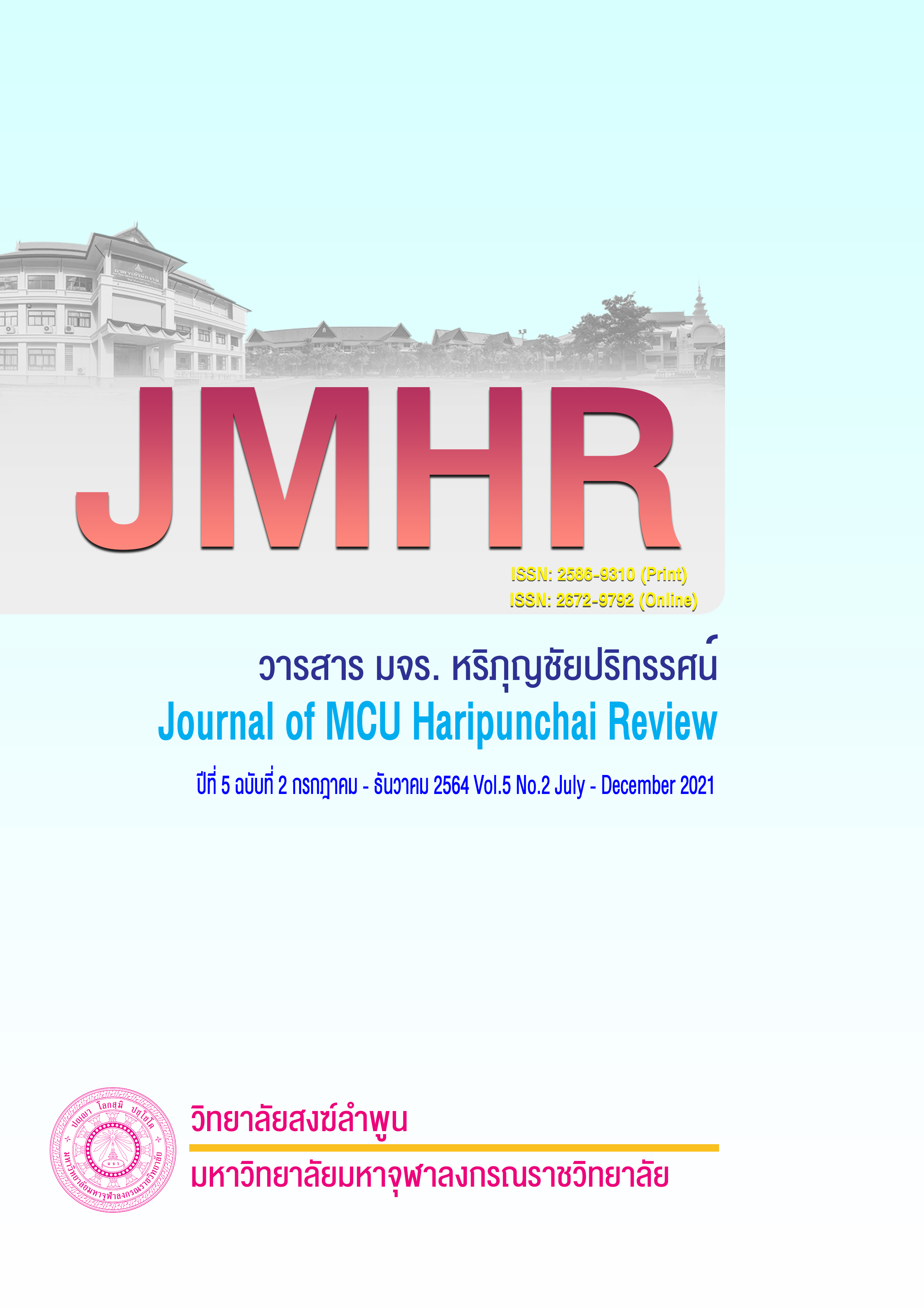Management of modern agricultural community development based on Lanna Thai society
Main Article Content
Abstract
Lanna Thai society is mainly defined by Chiang Mai, Chiang Rai, Phayao, Lamphun, Lampang, Phrae, Nan, and Mae Hong Son. Most are communities with both old-fashioned agricultural societies. Modern and blended style according to the context of each community with main occupations such as farming, gardening, farming, animal husbandry. and fishing career The occupation of farmers nowadays has changed the traditional way to a new way that often uses chemicals in many production sectors, causing impact to natural resources until it becomes a problem. In addition, the villagers' values of burning forests cause a lot of smog. problems of shifting cultivation, etc. Therefore, the government should have a policy to promote communities in Lanna to conform to the characteristics of sustainable agriculture. There is a plan to develop new agricultural methods in the long term. and have various projects That allows people to be aware of the impact on their lives that affect the destruction of natural resources to a minimum. And can generate income from production that contributes to the safety and stability of food production of Lanna Thai farmers.
Article Details
References
กองนโยบายและแผน สำนักอธิการบดี มหาวิทยาลัยราชภัฏเชียงใหม่. (2563). แผนพัฒนาภาคเหนือพ.ศ. 2560 – 2565 ฉบับทบทวน. มหาวิทยาลัยราชภัฏเชียงใหม่.
กระทรวงเกษตรและสหกรณ์. (2559). ยุทธศาสตร์เกษตรและสหกรณ์ ระยะ 20 ปี (พ.ศ. 2560 – 2579). กระทรวงเกษตรและสหกรณ์
_______________. (2563). คู่มือโครงการ 1 ตำบล 1 กลุ่มเกษตรทฤษฎีใหม่. กระทรวงเกษตรและสหกรณ์.
โครงการพัฒนาศักยภาพในการเชื่อมโยงระดับภูมิภาคและจัดทำแผนยุทธศาสตร์เพื่อสนับสนุนการพัฒนาระดับกลุ่มจังหวัด. (2561). รายงานผลการพัฒนารายภาคภาคเหนือ. สำนักงานปลัดกระทรวงมหาดไทย.
นนทกานต์ จันทร์อ่อน. (2557). ความมั่นคงทางอาหารของประเทศไทย. วารสารจุลนิติ สำนักงานเลขาธิการวุฒิสภา. ปีที่ 4 ฉบับที่ 2 (มกราคม) : 1.
พันธ์จิตต์ สีเหนี่ยง. (2556). การส่งเสริมเกษตรยั่งยืน. ภาควิชาส่งเสริมและนิเทศศาสตร์เกษตร คณะเกษตรกำแพงแสน.
ลิปิกร มาแก้ว. (มปป). ประเพณีและวัฒนธรรมล้านนา. คณะศิลปกรรมและสถาปัตยกรรมศาสตร์ มหาวิทยาลัยเทคโนโลยีราชมงคลล้านนา ภาคพายัพเชียงใหม่.
เสาวณี จันทะพงษ์ และพรชนก เทพขาม. (2561). นวัตกรรมการเกษตร: ทางออกปัญหาความเหลื่อมล้ำของไทย ตอน 1. ธนาคารแห่งประเทศไทย.
สุณีชญาน์ ฉัตรบุรานนทชัย. (2563). ยุทธศาสตร์การจัดการความปลอดภัยของอาหารในการค้าระหว่างประเทศของอุตสาหกรรมเครื่องปรุงรสไทย. วารสารบัณฑิตศึกษา มหาวิทยาลัยราชภัฏเชียงราย. ปีที่ 13. ฉบับที่ 3. (กันยายน – ธันวาคม) : 15.
สำนักงานเศรษฐกิจการเกษตร. (2559). แผนพัฒนาการเกษตรในช่วงแผนพัฒนาเศรษฐกิจและสังคมแห่งชาติ ฉบับที่ 12 (พ.ศ. 2560 – 2564). กระทรวงเกษตรและสหกรณ์.
สำนักงานสภาพัฒนาการเศรษฐกิจและสังคมแห่งชาติ. (2562). แผนพัฒนาภาค พ.ศ.2560-2565 (ฉบับทบทวน). มติคณะกรรมการบูรณาการนโยบายพัฒนาภาค (ก.บ.ภ) ครั้งที่ 2/2562 วันที่ 2 ธันวาคม 2562.
สำนักงานจังหวัดลำพูน. (2561). กลุ่มจังหวัดภาคเหนือตอนบน 1. สำนักงานจังหวัดลำพูน. (เอกสารอัดสำเนา).
โสมรัศมิ์ จันทรัตน์ วิษณุ อรรถวานิช ภูมิสิทธิ์ มหาสุวีระชัย กรรณิการ์ ธรรมพานิชวงค์และจิรัฐ เจนพึ่งพร. (2562). ภูมิทัศน์ภาคเกษตรไทย จะพลิกโฉมอย่างไรสู่การพัฒนาที่ยั่งยืน ?. การสัมมนาวิชาการประจำปี 2562 ของธนาคารแห่งประเทศไทย ระหว่างวันที่ 30 กันยายน – 1 ตุลาคม 2562 ณ โรงแรม Centara Grand at Central World. กรุงเทพมหานคร.


